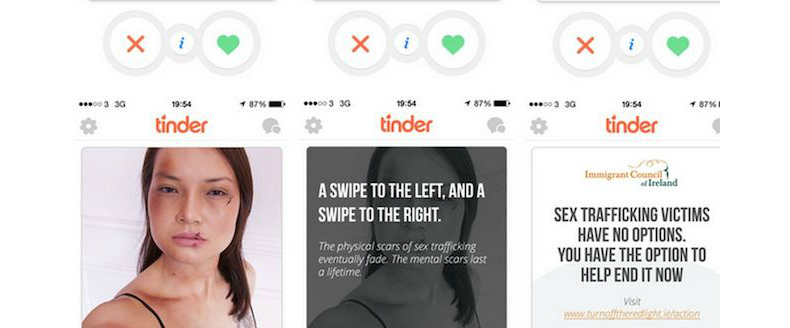New Epolitics.com contributor Annabelle Baskin is Campaign Coordinator at Picture Motion and served as a field organizer on Senator Mary Landrieu’s 2014 reelection campaign. This article first appeared on the Picture Motion site.
Seeing Beyond the “Big Two” on Social Media
Taking risks on digital innovation shows you are not only a thought leader in your industry but, more importantly, you offer an enticingly fresh opportunity for audiences to engage with your cause.
I recently had the opportunity to attend a two-day Social Media Fundamentals Training program at the New Organizing Institute (NOI), a progressive grassroots outfit responsible for training many of the Democratic Party’s digital organizers. Naturally, the session attracted a group of like-minded changemakers and social media enthusiasts, all eager to learn the latest tricks of the trade and to catch a healthy dose of creative inspiration from some of the foremost experts in the progressive digital space.
The key takeaway from the training? Social media is a powerful democratizer that, if used well, can effectively change the hearts and minds of people. But these days, it can be challenging for smaller budget campaigns (like those offered at Picture Motion), to rise above the digital noise silencing the rest of the pack. As giant corporations with equally giant budgets for social marketing efforts continue to occupy more and more space on Facebook and Twitter, the commotion can be stifling, making maintaining an audible voice among all the corporate white noise a real challenge.
That’s why seeing beyond the “big two” platforms — Facebook and Twitter — as vehicles for small organizations’ social media strategy is critical to creating an impact. More niche platforms like Instagram, Pinterest, or even Tinder can boost communities that are more engaged with (and therefore more likely to generate buzz behind) the cause that is central to a campaign’s call-to-action. For this reason, I was particularly struck by the parting words of Malaka Gharib, a digital strategist at the Malala Fund, following her presentation on creatively utilizing alternative platforms:
“Don’t be afraid to be the first to ‘crack’ a new platform, give trendy a try, and take a risk!”
With this in mind, I’ve listed a few organizations from Malaka’s presentation that have successfully adopted alternative platforms to create impact. This list is by no means all-encompassing; rather it’s intended to be something to chew on for all you impact producers or filmmakers looking for inspiration:
This campaign from UNICEF uses Pinterest to make a point about consumerism and #FirstWorldProblems in a larger effort to raise awareness of child poverty. They add perspective to the aspiration-filled social network by creating a fictional profile of Ami Musa, featuring her less than luxurious desires: water, shelter, and soap.
The ONE Campaign created the powerful user generated campaign — #EveryParent — which targeted the White House directly. During the week of V-Action, volunteers made over 2,000 calls to the White House asking for a pledge of 1 billion dollars over four years to ensure that their children would receive proper vaccination. They did this by posting photos to Instagram with their children, and used the hashtag #EveryParent to organize and amplify the conversation.
Tinder
The Immigration Council of Ireland used Tinder to raise awareness of the fact that 2.4 million people around the world are victims of human trafficking. Users swipe through a series of images of a woman as she becomes progressively more bruised. Afterwards, messages appear such as “your options are left or right. Women forced into prostitution in Ireland have none.”
YouTube
“Most Shocking Second A Day” is a PSA created by Don’t Panic, a British creative agency, for the Save the Children, the world’s leading independent organization for children. The goal of this campaign video is to draw attention to the ongoing violence in Syria by showing a British girl filming a one second video of her life. In her footage you can see messages of the escalating conflict pop up in the news, but she stays oblivious. Then bombs start falling. The video ends with a thought-provoking sentence, “Just because it isn’t happening here doesn’t mean it isn’t happening.” Save the Children optimized the video for conversions to drive click-throughs to the donation page, as you can see in the below photo.
Tumblr
The ONE Campaign crowdsourced content on Tumblr to explain why sweet potatoes are superheroes in the fight against malnutrition in developing countries. Because sweet potatoes are cheap, easy to grow in uncertain conditions, and able to provide much-needed nutrients like vitamins C, A and B6 to undernourished children, ONE created a petition to help fund farmers in the developing world to make sweet potatoes more widespread. In addition to the petition, they asked participants to submit recipes containing sweet potatoes on their Tumblr page, creating a “digital cookbook” of “Recipes for Change” to spread awareness of the campaign.
There are many other examples of how movements and organizations are thinking outside the box when it comes to online engagement. I share this with the hope that the film- and media-makers out there, in addition to non-profits and social enterprises, think about these creative ideas when they release their social-impact content into the world, and remember to take risks and think outside the box.
To learn more about New Organizing Institute trainings, go here.






